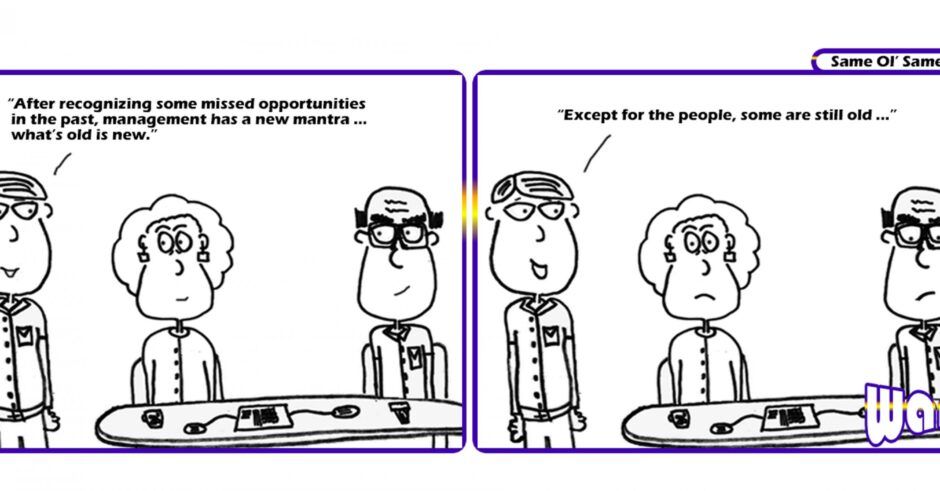I was on a call last week where folks were complaining that Agile is “nothing new”, “it’s the same stuff we’ve been talking about for years.” Is Agile “new”? Why is it gaining traction and showing results in ways that previous management fads weren’t able to? Let’s take a closer look at the rise of Agile.
No one was doing it. When I hear people lamenting that these ideas are not new, my first reaction is “that’s right, and no one was doing it”. Agile has helped bring some of the old ideas to life.
W. Edwards Deming famously was unable to get his ideas to stick in the US, so instead found a home for them in Japan. Reading Deming’s work from the early 1970s I was surprised at how little is in use today. We revere Deming, and yet we didn’t know how to connect the ideas to the reality on the ground.
We reverted. In the 1980s businesses started to evolve their management practices with the work of Drucker, Senge, Deming, and others. But then something happened in the 1990s. Things started moving really fast, and they felt out of control. Technology and software didn’t give much insight into what was happening or when things could be expected to complete. Programmers were cowboys, primadonnas, running around coding, out of control. Businesses got uncomfortable and decided to put some controls and governance in place. Enter Project Management. Project management used revived Fredrick Winslow Taylor’s reductionist thinking and applied it to software and other high tech fields. Reductionism boils things down and reduces them to discrete, measurable tasks. The core assumption of reductionism is that we know what needs to be done, we just need to go do it. The reality with emerging technology is that we don’t know, we learn as we go. Using reductionism for complex, multi-dependency work, boils out the ability to handle uncertainty and unpredictability. And with technology, it’s all unpredictable.
High control management made people feel good, they could track it on a Gantt chart. The problem was that the plan was never accurate and even when it was, by the time work was completed it rarely met the planned outcome. In order to overcome these gaps between plan and actual, really dysfunctional management took hold as managers attempted to hold people accountable for meeting impossible plans.
“Project Management” and its reductionist, transactive management philosophy are responsible for the dismal work-life people live in today. We are now undoing all the damage that was done during the 20+ year reign of project management.
An idea whose time has come. Some of the ideas of Demming, Senge et. al. were simply not feasible with the technology we had at the time. Small batch size is a perfect example. When you think about doing work in smaller batches, the cost of change must be lower than the cost of certainty. When the cost of change is high, you want to put a ton of effort into planning to avoid changes. Think about what it was like when people had to load code using punch cards. It was better to be perfect the first time because re-doing all those cards had a high cost of change. Technology advancements have made it easier to make changes and change very quickly. This eliminates the need for big-design-upfront to make sure everything is perfect before we move ahead.
Bright lines. Bright lines refer to the practice of being clear about what’s acceptable and what’s not. Agile has drawn some very bright lines around what management beliefs and practices are good, and what’s not. When people talk about management fads, I think of Agile as a federation of the practices that brought value, and rejection of those built on faulty values. For example, fast feedback, focus, collaboration has been deemed Agile. Authoritative, transactive management, theory X, handoffs have been deemed un-Agile. Let there be no confusion that if this is just another fad, it is one that draws a line in the sand for all past and future fads.
What old ideas have been recycled under the ‘Agile’ title in your workplace? Let us know!
The Business Transformation Network has posted this article in partnership with WorkBytes.


